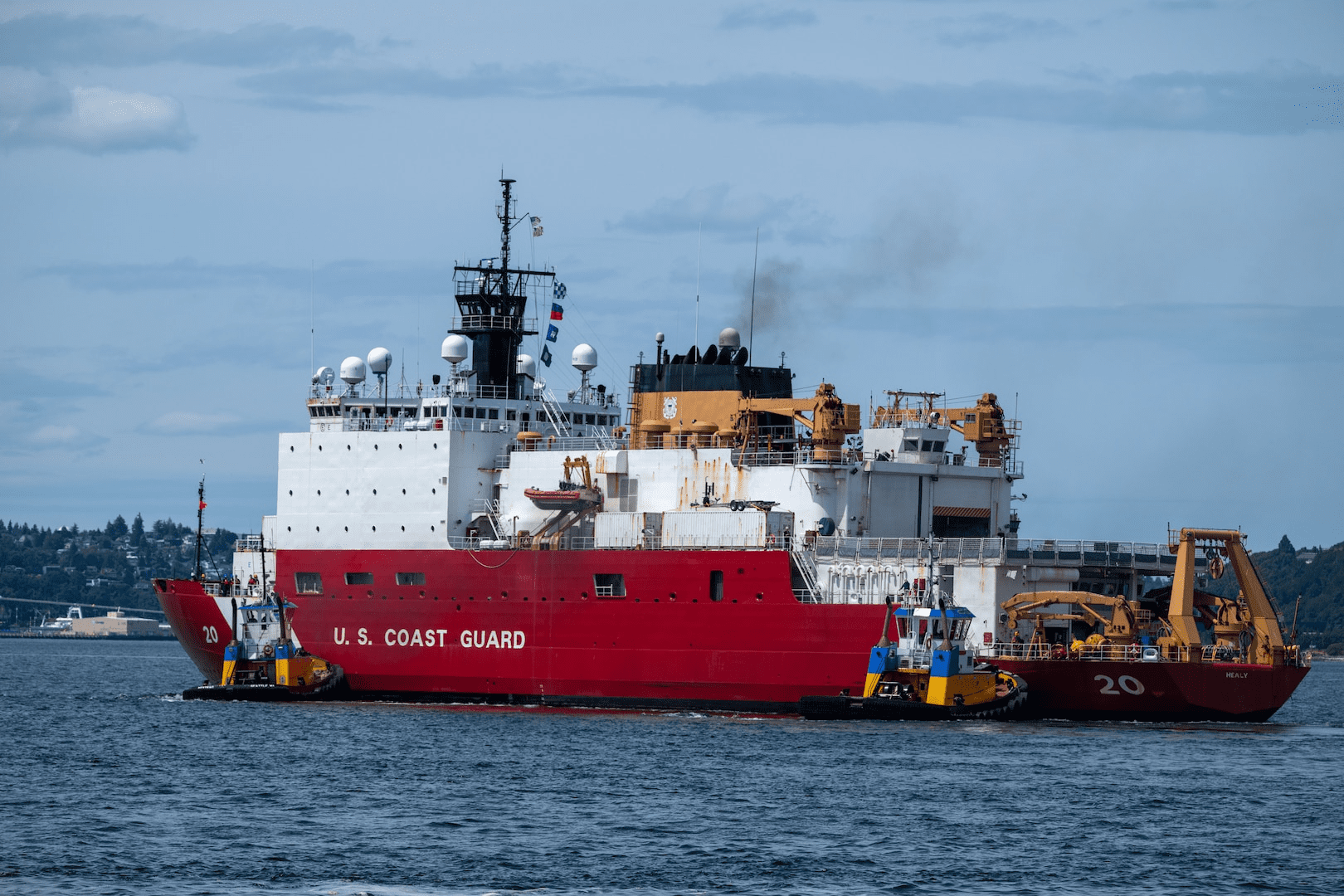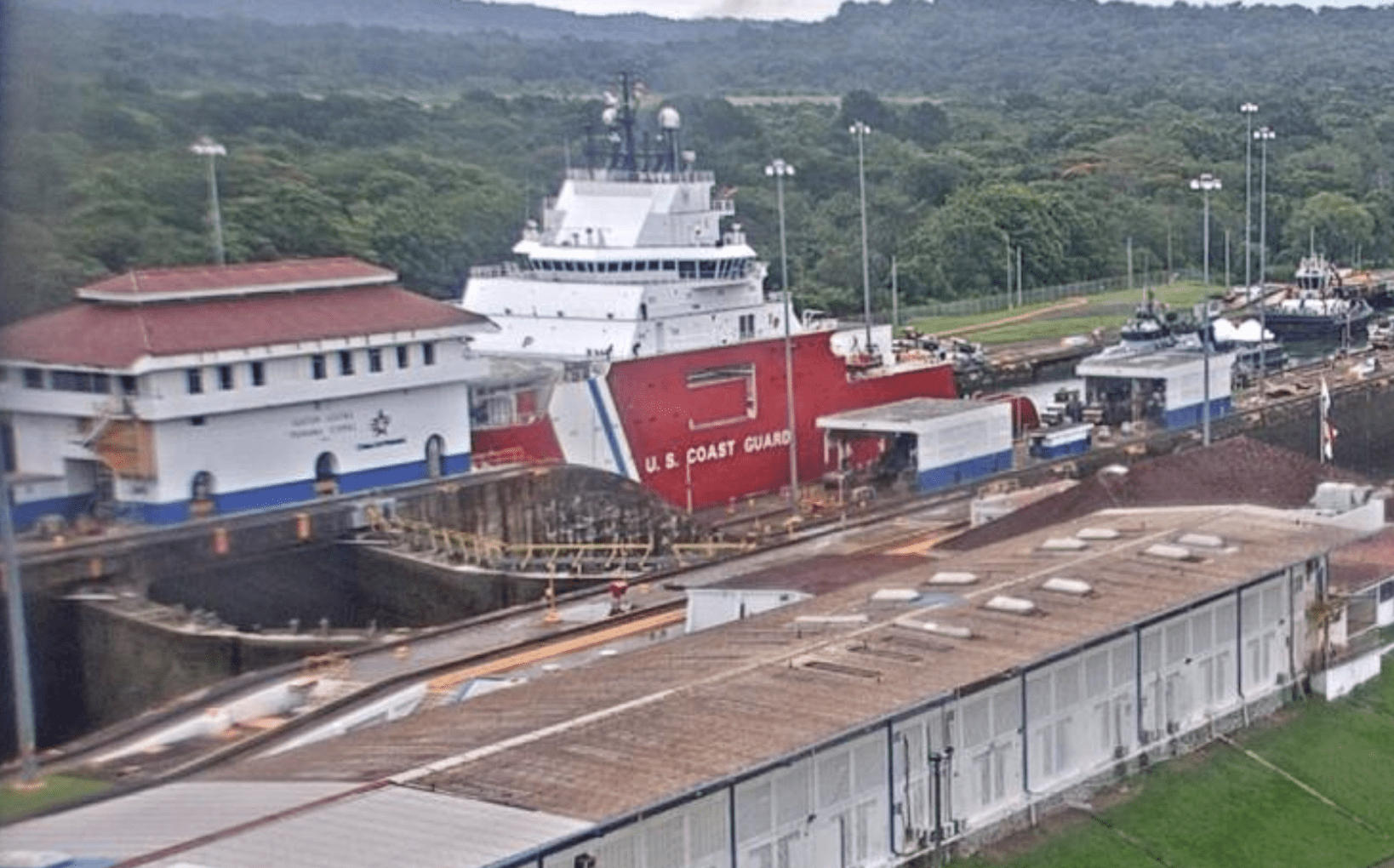While the US Coast Guard has done amazing work in modernizing their fleet of aging cutters and integrating SAR communications into the streamlined computerized platform Rescue 21, little of the technology has poured down the maritime community. So gCaptain says out with the 1990’s GMDSS consoles, and in with new ideas to improve safety offshore. To get the conversation started, here are 10 ideas the USCG could start implementing today:
10: GPS Enabled Buoys
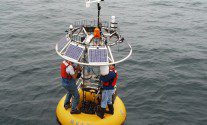 Tired of reading notice to mariner corrections about buoys that drifted off location? Why not place satellite tracking devices on them? The consumer electronics world has a myriad of devices capable of tracking cars, planes and boats, so why can’t the USCG track buoys? The device could be simple, a toughened version of the SPOT Messenger, but the real magic would happen online. Data from each buoy could be aggregated and pushed out to a website online and, eventually, directly to ECDIS systems aboard ships. Real time updates would certainly make chart corrections simpler but it would also serve a critical function the next time a Tsunami hits our shore.
Tired of reading notice to mariner corrections about buoys that drifted off location? Why not place satellite tracking devices on them? The consumer electronics world has a myriad of devices capable of tracking cars, planes and boats, so why can’t the USCG track buoys? The device could be simple, a toughened version of the SPOT Messenger, but the real magic would happen online. Data from each buoy could be aggregated and pushed out to a website online and, eventually, directly to ECDIS systems aboard ships. Real time updates would certainly make chart corrections simpler but it would also serve a critical function the next time a Tsunami hits our shore.
9: E-Loran
 For reasons from providing redundancy for GPS navigation to powering the next round of electronic devices, capable of positioning regardless of having a celestial view, eLoran has captured the excitement of gCaptain editors and forum members… that is until the USCG announced the termination of the Loran system. The way to a better future is clearly to invest in technology infrastructure not cut programs with great promise for improved efficiency and safety. But don’t give up hope, eLoran had great potential to improve maritime operations and safety , a fact that hasn’t changed. Let’s revisit this technology and move it from the dead files back to the front burner.
For reasons from providing redundancy for GPS navigation to powering the next round of electronic devices, capable of positioning regardless of having a celestial view, eLoran has captured the excitement of gCaptain editors and forum members… that is until the USCG announced the termination of the Loran system. The way to a better future is clearly to invest in technology infrastructure not cut programs with great promise for improved efficiency and safety. But don’t give up hope, eLoran had great potential to improve maritime operations and safety , a fact that hasn’t changed. Let’s revisit this technology and move it from the dead files back to the front burner.
8: Rescue 21 Public Interface
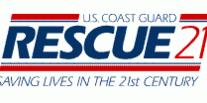 When a ship sends a distress alert the USCG’s Rescue 21 computers start lighting up with activity. Location information is pulled from the distress vessel’s DSC and EPIRB, vessel registration documents are automatically cross-referenced and an operator fills in the blanks with specific details about the distress. All good information correlated and processed by system for the digital age. What happens next is decidedly 20th centerury in its approach… A CG VHF operator gets on channel 16 and begins broadcasting laced with sparse details. If it’s a large ship, additional information might be broadcast to your GMDSS console, however this too is 20th century technology and the information sent is sparse. What we need is a public interface to Rescue 21 developed by the guys who built Facebook that sends you text alerts and buttons for “nearby distresses”…. slicking on the button would give you a screen full of data including photos of the vessel, crew compliment, MSDS info about its cargo, etc. Plus a big Google map that plots both the distressed ships and all nearby vessels capable of assisting in the SAR efforts. Some of the information in the Rescue 21 system is confidential, but much of it is publicly available. The USCG just needs the willingness to share.
When a ship sends a distress alert the USCG’s Rescue 21 computers start lighting up with activity. Location information is pulled from the distress vessel’s DSC and EPIRB, vessel registration documents are automatically cross-referenced and an operator fills in the blanks with specific details about the distress. All good information correlated and processed by system for the digital age. What happens next is decidedly 20th centerury in its approach… A CG VHF operator gets on channel 16 and begins broadcasting laced with sparse details. If it’s a large ship, additional information might be broadcast to your GMDSS console, however this too is 20th century technology and the information sent is sparse. What we need is a public interface to Rescue 21 developed by the guys who built Facebook that sends you text alerts and buttons for “nearby distresses”…. slicking on the button would give you a screen full of data including photos of the vessel, crew compliment, MSDS info about its cargo, etc. Plus a big Google map that plots both the distressed ships and all nearby vessels capable of assisting in the SAR efforts. Some of the information in the Rescue 21 system is confidential, but much of it is publicly available. The USCG just needs the willingness to share.
7: More Secret Weapons
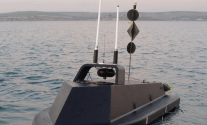 In a recent interview with CG-721, the weapons development team that we’ve nicknamed Skunk Works of the Coast Guard, we learned of new non-lethal weapons being developed to get the attention of “unresponsive” vessels. We also learned of a new computer assisted super gun called the Gyro Stabilized Weapons System which is the ultimate in cool weapons technology. gCaptain has done many posts on weapons at sea and has learned that technology from magnetic robots to anti-pirate lasers is being developed commercially for use against pirates. Why can’t the Coast Guard join the game? If the US Military can justify billions of dollars to budget the real skunk works, why can’t it give just one billion to the USCG to play around with? What gCaptain wants is more secret projects, projects that are highly classified, projects that will help the CG fight pirates and save mariners lost at sea. Sometimes transparency isn’t a good thing. Sometimes, to promote progress, what’s really needed is military grade secrecy and a pile of warm cash, which is why we are willing to put this idea on hold until the federal budget is balanced.
In a recent interview with CG-721, the weapons development team that we’ve nicknamed Skunk Works of the Coast Guard, we learned of new non-lethal weapons being developed to get the attention of “unresponsive” vessels. We also learned of a new computer assisted super gun called the Gyro Stabilized Weapons System which is the ultimate in cool weapons technology. gCaptain has done many posts on weapons at sea and has learned that technology from magnetic robots to anti-pirate lasers is being developed commercially for use against pirates. Why can’t the Coast Guard join the game? If the US Military can justify billions of dollars to budget the real skunk works, why can’t it give just one billion to the USCG to play around with? What gCaptain wants is more secret projects, projects that are highly classified, projects that will help the CG fight pirates and save mariners lost at sea. Sometimes transparency isn’t a good thing. Sometimes, to promote progress, what’s really needed is military grade secrecy and a pile of warm cash, which is why we are willing to put this idea on hold until the federal budget is balanced.
6: Join The Anti-Pirate Game With A New Website
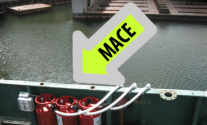 The situation in Somalia is only getting worse. Recently, a ship, with a freshly disembarked security team, was taken hostage. Besides SEAL teams, no one has the experience with non-compliant vessel boardings and interdictions like the Coast Guard and it’s time for them to step up their game. First order of business is to test and verify all the new weapons and anti-boarding systems being sold by commercial vendors. Is an anti-pirate laser effective in warding off pirates? What about a 300-Gallons of mace? And what about the security teams? Have any of them received government training, or at least verification? This is why the USCG needs a new website titled anti-pirate.mil which, like Consumer Reports, tests these systems – along with security providers – and gives their stamp of approval. But approval is just the start, the website would also be filled with YouTube video of weapons being fired and pro/con lists of each device.
The situation in Somalia is only getting worse. Recently, a ship, with a freshly disembarked security team, was taken hostage. Besides SEAL teams, no one has the experience with non-compliant vessel boardings and interdictions like the Coast Guard and it’s time for them to step up their game. First order of business is to test and verify all the new weapons and anti-boarding systems being sold by commercial vendors. Is an anti-pirate laser effective in warding off pirates? What about a 300-Gallons of mace? And what about the security teams? Have any of them received government training, or at least verification? This is why the USCG needs a new website titled anti-pirate.mil which, like Consumer Reports, tests these systems – along with security providers – and gives their stamp of approval. But approval is just the start, the website would also be filled with YouTube video of weapons being fired and pro/con lists of each device.
5. SAR UAV’s
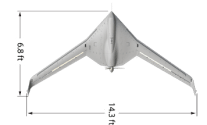 gCaptain may sound like a broken record on this one, but that’s only because the idea is a true no-brainer and we are surprised by the CG’s lack of interest in the subject. News reports come out daily about the success of UAVs in Iraq, Afghanistan and, just yesterday, Libya. UAV’s clearly work.
gCaptain may sound like a broken record on this one, but that’s only because the idea is a true no-brainer and we are surprised by the CG’s lack of interest in the subject. News reports come out daily about the success of UAVs in Iraq, Afghanistan and, just yesterday, Libya. UAV’s clearly work.
When a distress call is made from the high seas, helicopters and/or C-130’s are launched. These are expensive and put their crews into harms way. What the CG needs is a fleet of relatively inexpensive UAVs to support search and rescue operations. Every distress call received by the USCG should be followed by the immediate launch of a UAV and, when the sinking vessel can’t be found, a dozen UAV’s should be launched – all equipped with thermal imaging cameras – to find survivors. At a cost of just over $100,000 for a fully capable FURY model this answer is cheap, easy and effective.
4. Internet Communication
 Admiral Thad Allen was famous for his push into Social Media but his sucessor as Commandant of the Coast Guard, Admiral Robert Papp, has pulled back the reigns on participation in social media. Part of this has been to refocus on the core missions of the Coast Guard, but the push back also comes from top leadership advisers who question the usefulness of social media and blogs like gCaptain. What has become lost is the simple fact that the internet is a very useful tool for communication. The articles gCaptain writes, the YouTube videos, the Facebook shares, are all means of communicating ideas…. something every organization should utilize to their benefit. Communicating via the internet can appear difficult and time consuming, but it’s proven to be highly effective. The US Navy understands this, why not the Coast Guard?
Admiral Thad Allen was famous for his push into Social Media but his sucessor as Commandant of the Coast Guard, Admiral Robert Papp, has pulled back the reigns on participation in social media. Part of this has been to refocus on the core missions of the Coast Guard, but the push back also comes from top leadership advisers who question the usefulness of social media and blogs like gCaptain. What has become lost is the simple fact that the internet is a very useful tool for communication. The articles gCaptain writes, the YouTube videos, the Facebook shares, are all means of communicating ideas…. something every organization should utilize to their benefit. Communicating via the internet can appear difficult and time consuming, but it’s proven to be highly effective. The US Navy understands this, why not the Coast Guard?
3. Port Information iPhone App
 Port information is critical to the success of a short voyage from sea-buoy to dock, but it continues to be limited. This information is contained in a dated volume of publications updated with scissors and glue, weather information comes over facsimile and computerized voice recordings and no information is provided about your pilot until he stands next to you on the bridge. What we need is an iPhone app! Open the app and you get a list of ships entering the port and just like the arrivals board at your local airport, you can instantly see which ships are on time, delayed or in a holding pattern. Weather streams into another page but it is augmented with local current and wind data. Each ship has a page with basic information as does the pilot assigned to each ship… and both contain contact information so they can call each other as the launch is still making it’s way out to the ship. Finally, there might be a message board where ship captains, pilots and VTS could exchange information in real time. Facebook has been doing this for years, why doesn’t the Coast Guard do the same thing for ships?
Port information is critical to the success of a short voyage from sea-buoy to dock, but it continues to be limited. This information is contained in a dated volume of publications updated with scissors and glue, weather information comes over facsimile and computerized voice recordings and no information is provided about your pilot until he stands next to you on the bridge. What we need is an iPhone app! Open the app and you get a list of ships entering the port and just like the arrivals board at your local airport, you can instantly see which ships are on time, delayed or in a holding pattern. Weather streams into another page but it is augmented with local current and wind data. Each ship has a page with basic information as does the pilot assigned to each ship… and both contain contact information so they can call each other as the launch is still making it’s way out to the ship. Finally, there might be a message board where ship captains, pilots and VTS could exchange information in real time. Facebook has been doing this for years, why doesn’t the Coast Guard do the same thing for ships?
2. Lifeboat Release Hook X-Prize
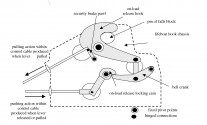 Lifeboat releasing hooks has been a hot topic in the industry for years. Countless fatalities have happened for the simple reason that the mechanisms that allow you to release a lifeboat from the davit wires are not failsafe in their design. IMO sub-committees have been formed to long at the problem and lifeboat manufacturers have been put under intense pressure to improve their systems yet no solutions have been found to be 100% safe. X-Prize is an organization that funds the impossible. From getting back to the moon, to developing new technology for fighting oil spills, the organization funds a prize for people invent the impossible. We need to fix the problem of lifeboat fatalities and nothing says you are serious like a million dollar prize. Sure $1 million is a lot of money for an organization which struggles to meet its budget but, with $10.34 billion allocated to the Coast Guard in the 2012 Presidential Budget, the figure seems small compaired to the number of lives it may save.
Lifeboat releasing hooks has been a hot topic in the industry for years. Countless fatalities have happened for the simple reason that the mechanisms that allow you to release a lifeboat from the davit wires are not failsafe in their design. IMO sub-committees have been formed to long at the problem and lifeboat manufacturers have been put under intense pressure to improve their systems yet no solutions have been found to be 100% safe. X-Prize is an organization that funds the impossible. From getting back to the moon, to developing new technology for fighting oil spills, the organization funds a prize for people invent the impossible. We need to fix the problem of lifeboat fatalities and nothing says you are serious like a million dollar prize. Sure $1 million is a lot of money for an organization which struggles to meet its budget but, with $10.34 billion allocated to the Coast Guard in the 2012 Presidential Budget, the figure seems small compaired to the number of lives it may save.
1. The idea we missed…
At gCaptain, we believe in the power of mariners communicating online to solve problems, both big and small. Our readers help each other every day by posting questions and answers on the forum. We have come up with 9 ideas for maritime technology the Coast Guard could implement today, but there are dozen more in the minds of our community. What is the number one idea you would like the Coast Guard to pursue?

 Join The Club
Join The Club




 Tired of reading notice to mariner corrections about buoys that drifted off location? Why not place satellite tracking devices on them? The consumer electronics world has a myriad of devices capable of tracking cars, planes and boats, so why can’t the USCG track buoys? The device could be simple, a toughened version of the
Tired of reading notice to mariner corrections about buoys that drifted off location? Why not place satellite tracking devices on them? The consumer electronics world has a myriad of devices capable of tracking cars, planes and boats, so why can’t the USCG track buoys? The device could be simple, a toughened version of the  For reasons from providing redundancy for GPS navigation to powering the next round of electronic devices, capable of positioning regardless of having a celestial view,
For reasons from providing redundancy for GPS navigation to powering the next round of electronic devices, capable of positioning regardless of having a celestial view, When a ship sends a distress alert the USCG’s Rescue 21 computers start lighting up with activity. Location information is pulled from the distress vessel’s DSC and EPIRB, vessel registration documents are automatically cross-referenced and an operator fills in the blanks with specific details about the distress. All good information correlated and processed by system for the digital age. What happens next is decidedly 20th centerury in its approach… A CG VHF operator gets on channel 16 and begins broadcasting laced with sparse details. If it’s a large ship, additional information might be broadcast to your GMDSS console, however this too is 20th century technology and the information sent is sparse. What we need is a public interface to Rescue 21 developed by the guys who built Facebook that sends you text alerts and buttons for “nearby distresses”…. slicking on the button would give you a screen full of data including photos of the vessel, crew compliment, MSDS info about its cargo, etc. Plus a big Google map that plots both the distressed ships and all nearby vessels capable of assisting in the SAR efforts. Some of the information in the Rescue 21 system is confidential, but much of it is publicly available. The USCG just needs the willingness to share.
When a ship sends a distress alert the USCG’s Rescue 21 computers start lighting up with activity. Location information is pulled from the distress vessel’s DSC and EPIRB, vessel registration documents are automatically cross-referenced and an operator fills in the blanks with specific details about the distress. All good information correlated and processed by system for the digital age. What happens next is decidedly 20th centerury in its approach… A CG VHF operator gets on channel 16 and begins broadcasting laced with sparse details. If it’s a large ship, additional information might be broadcast to your GMDSS console, however this too is 20th century technology and the information sent is sparse. What we need is a public interface to Rescue 21 developed by the guys who built Facebook that sends you text alerts and buttons for “nearby distresses”…. slicking on the button would give you a screen full of data including photos of the vessel, crew compliment, MSDS info about its cargo, etc. Plus a big Google map that plots both the distressed ships and all nearby vessels capable of assisting in the SAR efforts. Some of the information in the Rescue 21 system is confidential, but much of it is publicly available. The USCG just needs the willingness to share. In a recent interview with CG-721, the weapons development team that we’ve nicknamed
In a recent interview with CG-721, the weapons development team that we’ve nicknamed  The situation in Somalia is only getting worse. Recently, a
The situation in Somalia is only getting worse. Recently, a  gCaptain may sound like a broken record on this one, but that’s only because the idea is a true no-brainer and we are surprised by the CG’s lack of interest in the subject. News reports come out daily about the success of UAVs in Iraq, Afghanistan and, just yesterday, Libya. UAV’s clearly work.
gCaptain may sound like a broken record on this one, but that’s only because the idea is a true no-brainer and we are surprised by the CG’s lack of interest in the subject. News reports come out daily about the success of UAVs in Iraq, Afghanistan and, just yesterday, Libya. UAV’s clearly work. Admiral Thad Allen was famous for his push into Social Media but his sucessor as Commandant of the Coast Guard, Admiral Robert Papp, has pulled back the reigns on participation in social media. Part of this has been to refocus on the core missions of the Coast Guard, but the push back also comes from top leadership advisers who question the usefulness of social media and blogs like gCaptain. What has become lost is the simple fact that the internet is a very useful tool for communication. The articles gCaptain writes, the YouTube videos, the Facebook shares, are all means of communicating ideas…. something every organization should utilize to their benefit. Communicating via the internet can appear difficult and time consuming, but it’s proven to be highly effective. The
Admiral Thad Allen was famous for his push into Social Media but his sucessor as Commandant of the Coast Guard, Admiral Robert Papp, has pulled back the reigns on participation in social media. Part of this has been to refocus on the core missions of the Coast Guard, but the push back also comes from top leadership advisers who question the usefulness of social media and blogs like gCaptain. What has become lost is the simple fact that the internet is a very useful tool for communication. The articles gCaptain writes, the YouTube videos, the Facebook shares, are all means of communicating ideas…. something every organization should utilize to their benefit. Communicating via the internet can appear difficult and time consuming, but it’s proven to be highly effective. The  Port information is critical to the success of a short voyage from sea-buoy to dock, but it continues to be limited. This information is contained in a dated volume of publications updated with scissors and glue, weather information comes over facsimile and computerized voice recordings and no information is provided about your pilot until he stands next to you on the bridge. What we need is an iPhone app! Open the app and you get a list of ships entering the port and just like the arrivals board at your local airport, you can instantly see which ships are on time, delayed or in a holding pattern. Weather streams into another page but it is augmented with local current and wind data. Each ship has a page with basic information as does the pilot assigned to each ship… and both contain contact information so they can call each other as the launch is still making it’s way out to the ship. Finally, there might be a message board where ship captains, pilots and VTS could exchange information in real time. Facebook has been doing this for years, why doesn’t the Coast Guard do the same thing for ships?
Port information is critical to the success of a short voyage from sea-buoy to dock, but it continues to be limited. This information is contained in a dated volume of publications updated with scissors and glue, weather information comes over facsimile and computerized voice recordings and no information is provided about your pilot until he stands next to you on the bridge. What we need is an iPhone app! Open the app and you get a list of ships entering the port and just like the arrivals board at your local airport, you can instantly see which ships are on time, delayed or in a holding pattern. Weather streams into another page but it is augmented with local current and wind data. Each ship has a page with basic information as does the pilot assigned to each ship… and both contain contact information so they can call each other as the launch is still making it’s way out to the ship. Finally, there might be a message board where ship captains, pilots and VTS could exchange information in real time. Facebook has been doing this for years, why doesn’t the Coast Guard do the same thing for ships? Lifeboat releasing hooks has been a hot topic in the industry for years. Countless fatalities have happened for the simple reason that the mechanisms that allow you to release a lifeboat from the davit wires are not failsafe in their design.
Lifeboat releasing hooks has been a hot topic in the industry for years. Countless fatalities have happened for the simple reason that the mechanisms that allow you to release a lifeboat from the davit wires are not failsafe in their design.
